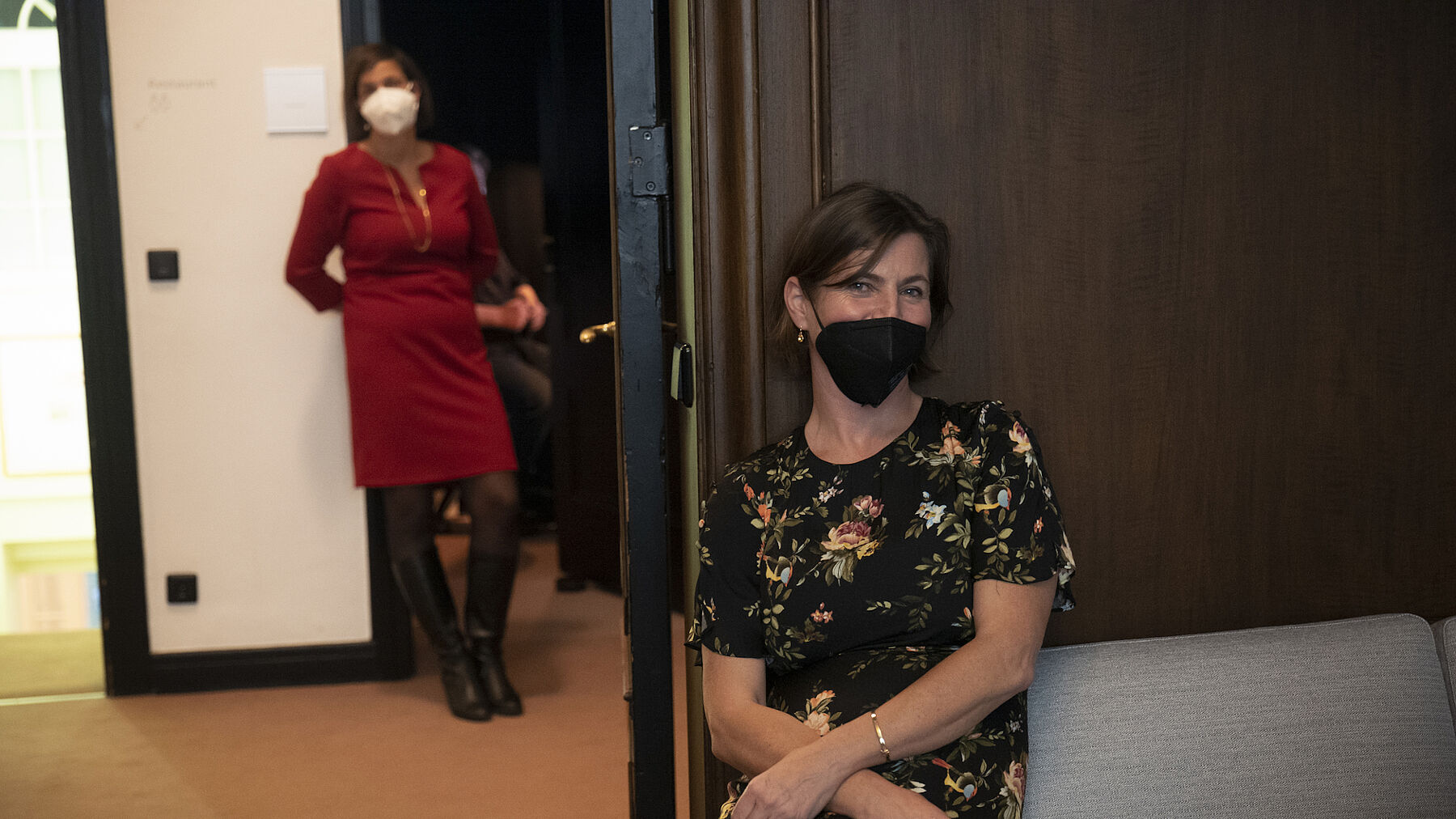
In August, after not venturing much outside the ring road circumference of Oxford since March 2020, it felt pretty exciting to be boarding a flight to Berlin. Looking out of my new windows at Villa Walther and seeing a different landscape filled me with enthusiasm for exploring Berlin. When I left the UK in August this was shortly after a final reversion to “pre-pandemic” rules, with the limits on event sizes removed as well as the requirements for face masks. Arriving in Berlin, the biggest differences to this in day-to-day life was in the proof of vaccination certificates being requested at venues and in the form of face masks on public transport and in indoor spaces.
Taking public transport in Berlin, you hear announcements (in both German and English) specifying the requirement to wear “FFP2” face coverings and signs saying no fabric face masks allowed. Comparatively, I had seen these white FFP2 face marks worn quite infrequently in the UK compared to the blue surgical or fabric face coverings. Fabric masks were a very common sight in the UK. Lots of people started making and selling homemade versions early on in 2020, and this trend continued with larger clothing brands designing and selling similar patterned or coloured face coverings. Fabric masks were even adopted in the university “stash” catalogue, with people wearing college or department branded face coverings.
From September to November, pandemic life in Berlin seemed to remain largely the same. Up until leaving the UK I had still been working largely remotely, so Wiko was the first re-introduction to a more social setting. Taking regular rapid antigen tests, wearing face coverings inside, and keeping windows open when possible, lunches and dinner were taken together and in-person Tuesday colloquiums were able to continue. Giving a Tuesday colloquium was my first “in-person” talk since March 2020!
From November onwards, case numbers began to rise again in Germany. I battled technological issues with my phone, trying to get its News App to give me Germany-specific articles to keep up-to-date with any covid changes. Pandemic life at Wiko in November saw a wave of Fellows getting booster shots and variably feeling a bit rubbish in the following days. In lunch time discussions booster shot locations (ease of transport, speed of queue!) and post-vaccination symptoms were thoroughly compared. Trips to the Grunewald pharmacy to update booster shots onto covid vaccination certificates were necessary. And I will not forget a Fellow’s guest who came to visit for the weekend, unfortunately having to spend 2-weeks isolating at the Wiko after picking up a covid case.
In the midst of all that, I am very glad I got to see Berlin in December. Christmas markets were open, and Berlin goes very big on Christmas lights. My first encounter of this was seeing the ~30 foot light-up bear scaffold in the cold light-of-day at the S-Halensee roundabout, which looked incredible at night! The Kurfürstendamm was magical to walk down with strings of lights wrapped around trees lining the road from Halensee to the Zoological Gardens. My fellowship was coming to an end in December, and I was soon due to return to the UK. With case numbers rising, and the introduction of omicron, pandemic life seemed to be gradually changing again. Walking around the city to look at the Christmas lights and markets, you could also see the increasing visibility of free covid testing centres for citizen rapid tests, and switches to “2G” (vaccinated or recovered, only) or “2G+” (vaccinated or recovered only, and a negative covid test result) rules in venues. I was trying to keep up-to-date with travel restrictions on the news, which saw the reintroduction of pre-flight testing and arrival PCR testing for return to the UK. Thus, after two covid tests and a short isolation while I waited for results, I am now back in the UK. The months at the Wiko were certainly the highlight of my pandemic 2020–2021–2022–who knows–period.
Rachel Wheatley